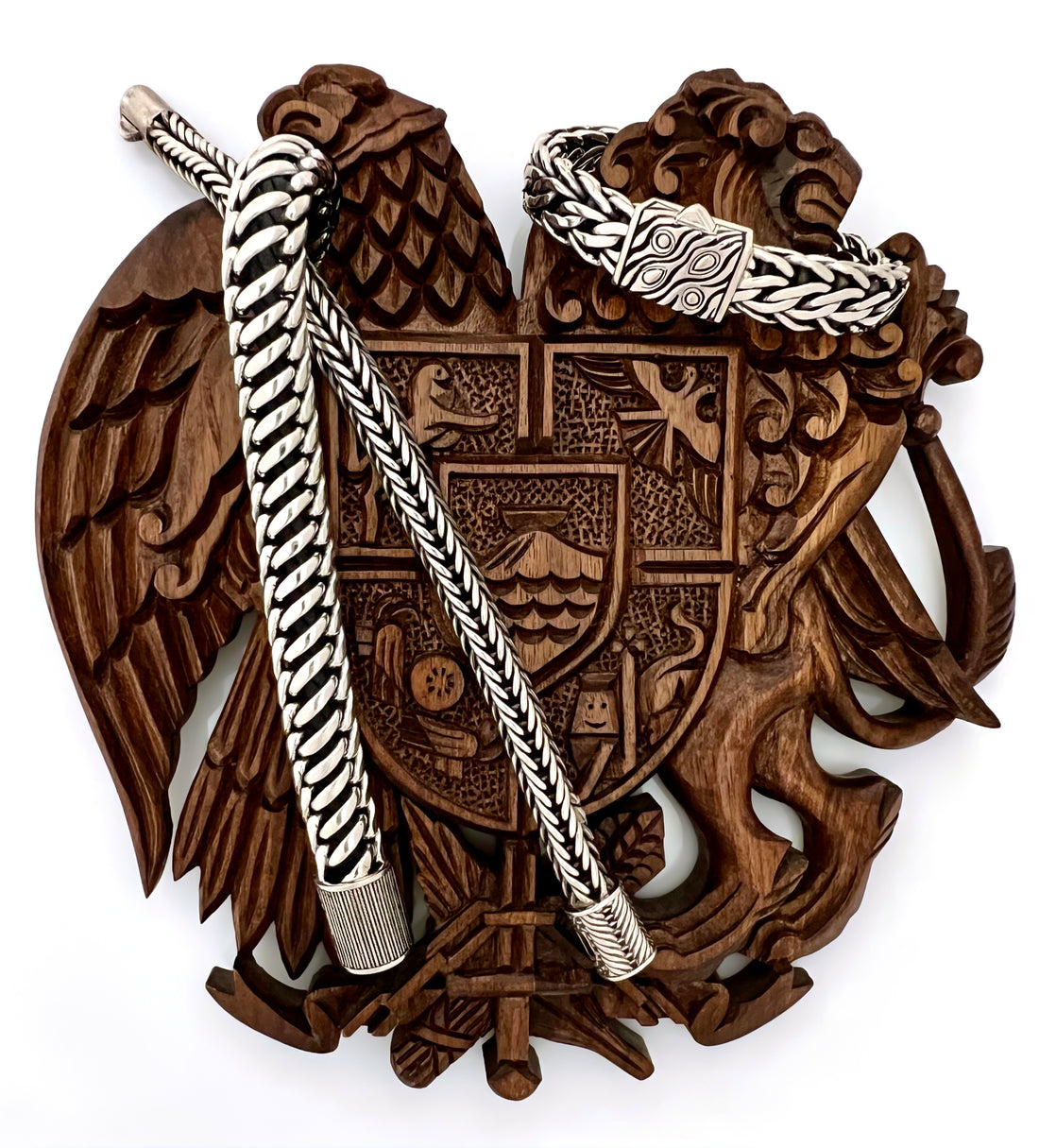Ancient jewelry techniques often feature intricate patterns and beautiful designs, and Balinese methods are no exception. Throughout the centuries of human history, the rich heritage of metalworking has left an indelible mark on the jewelry industry, creating works of art that you can wear with all of your favorite outfits. At the same time, metalworking in Bali has also led to a huge range of ceremonial objects and decorative objects that also showcase the loveliness of the techniques.
So what's the history that has led to what we see today? This guide will take you back in time and show you everything about ancient metalworking techniques that continue to influence Balinese jewelry design and modern metal art today.
Origins of Silver in Bali
The history of using silver in Bali, including for jewelry, dates back to the Bronze Age. The skills and intricacy of metalworking has been passed down through the generations and is still seen today. Objects dating back to the 5th century have been linked to Bali. That includes the famous Moon of Pejeng, a large bronze drum that is on display on the island today. Other metals have also been found and contributed to ancient Bali metalwork, including copper, gold and silver.
In ancient times, silver was primarily used in objects used for ceremonial purposes, but its use evolved over time as a way to express oneself, combining personal adornment with religion and cultural significance.
By the time of Jesus, the changes in farming and harvesting allowed for the accumulation of wealth, which thereby led to the practice of refined art forms and artistic expression, including wearing silver jewelry.
Icons in Silver Jewelry
Like in many cultures, certain icons are meaningful in Bali, many of which have Hindu origins. That's because by the 16th century, Bali was a safe haven for Hindus as Islam became more widespread in Java. These symbols were used for many reasons, but played a crucial role in silver work at the time as a way to express values and beliefs, as well as an artistic language that the Bali people used.
One motif that is very common in Bali silver is the use of nature icons. Not only does this showcase the beauty of the island, there are also quite a few nature images that have a special meaning to the Balinese people and their culture.
Flowers are one icon that holds a special place in the Bali culture. In particular, is the lotus flower, which signifies purity and spiritual awakening. You will find its presence on a range of objects, including earrings, necklaces and bracelets. Other floral motifs that are fairly common include the frangipani, which symbolizes new beginnings and positivity.
In addition to flowers, wildlife also has a strong representation in the many intricate pieces that metal artists create in Bali. The dragonfly and butterfly are two very common fauna motifs that you will see, with the former symbolizing transformation, and the latter aligning with the idea of rebirth. Sometimes, mythical creatures, such as Garuda, can be seen. This is a bird-like creature that represents power and protection.
The land and sea are also natural icons found in Balinese silver jewelry, as they play a vital role in the human culture of the island. You might see abstract patterns that represent waves, mountains and fields of rice. These can be seen on decorative objects, as well as jewelry, including pendants, rings and bracelets.
The techniques used by metal artists in the art of jewelry making also honor the topography of Bali. Filigree, which uses wires and mirrors, is often used to capture the beauty and complexity of the island's flora and fauna. Granulation is another technique used by jewelry designers, and involves the use of tiny silver granules, as a way to pay homage to the sandy beaches and starry skies that are so iconic in Bali.
Spiritual Significance of Silver
In addition to their beauty and complexity, the silver metal pieces you see in Balinese jewelry also hold a great deal of spiritual significance. Silver was thought to have the power to repel evil spirits, so it was often worn during ceremonies. The Balinese people also used silver bowls as a way to leave temple offerings to the gods. Silver jewelry was often cast as replicas of their gold counterparts and this has grown into a thriving export market in modern times.
Precious metals also hold spiritual significance for another reason. They are linked to the triple peak of Mt. Meru, which was the home of the gods and represented gold, silver and iron. Some metal smiths, including those dating as far back as the 14th century, when the Majapahit Empire of Java began colonizing Bali, consider themselves direct descendants of the Hindu fire god, Brahma.
Traditional Techniques
Each of the island's gifted metal artisans uses ancient techniques to create modern pieces that have historical significance and adhere to ancient traditions that produce intricate detailing that showcases the rich history of the art. Filigree and granulation were mentioned above, but let's look at them each a bit closer, along with repousse work.
Filigree involves the manipulation of fine wires to create twisted patterns that are then soldered together on the surface or to create the form of the piece of jewelry. The art style has a wide (global) and long cultural history. It has been around for thousands of years, with it gaining traction for fashion reasons at various times in history, including in the French periods of the 17th century, 18th century and 19th century, with one period of peak popularity during the Art Deco period of the 20th century.
Granulation uses small silver beads that are soldered in place on the surface of the piece to create texture and visual appeal. The art form dates back to the 8th century, but made its way to other parts of the world as the technique caught on, both for looks and for symbolic reasons.
Repousse is a technique that creates a raised pattern on a piece of jewelry by hammering the back with tools to create an embossed texture that can be seen and felt on the surface of the item. While it has been around for centuries, it gained popularity in silver work in the Bali culture as far back as when the island was an autonomous kingdom. The technique is called “tatahan” in Balinese. Repousse has been used extensively for a wide range of bridal jewelry, as well as decorations for traditional sarongs.
In addition to creating intricate and iconic pieces of jewelry, these traditional techniques allow artisans to showcase their talent and generational skills, enabling them to create items that have deep significance to the culture and the people in Bali.
Preserving the Art Form
Modern production of silver jewelry threatens traditional Balinese techniques to some degree. Mass production gets in the way of the time and attention to detail it takes to adhere to traditional jewelry making methods. However, efforts are being made to preserve the art form by training new artisans to continue the techniques so that they don't die out.
Buying authentic pieces of silver jewelry from passionate and dedicated retailers like Garni Trading also contributes to the preservation of an ancient art form that is being threatened by modern practices. Check out our exciting range for an idea of what Balinese silver artwork looks like and consider adding a few items to your collection.


